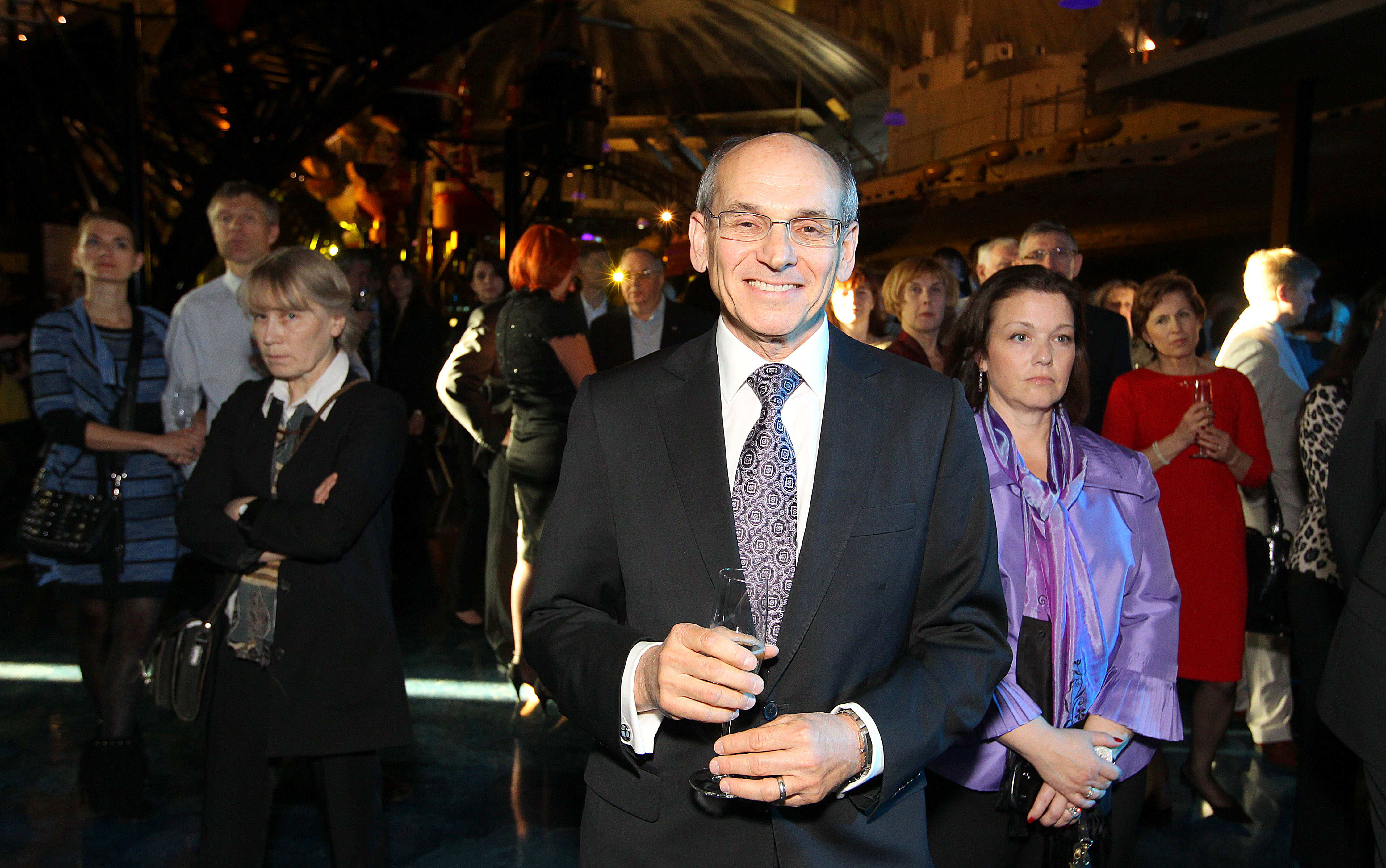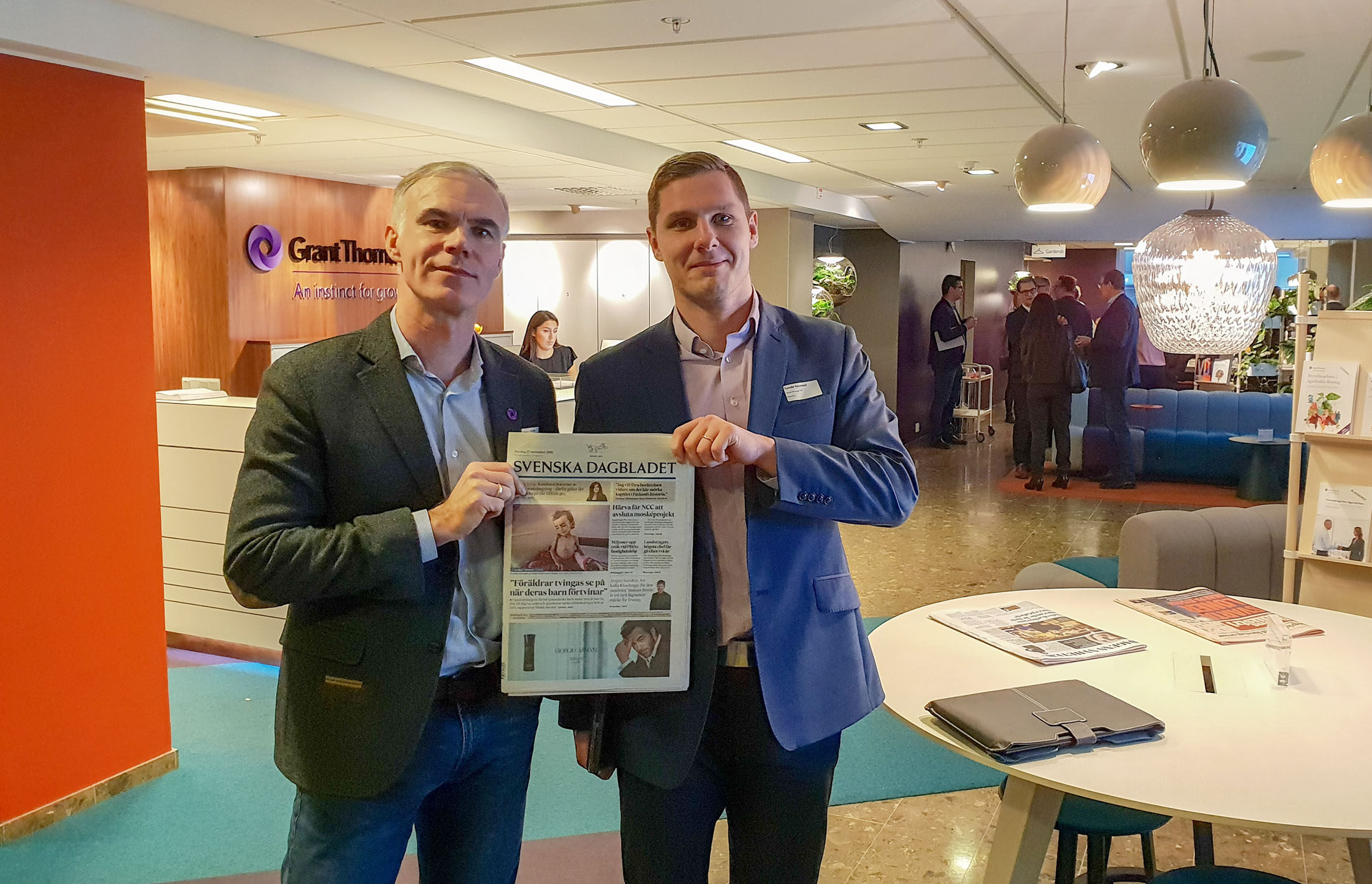Why Grant Thornton?
Jelena Žovnikova, who was a partner in Grant Thornton Baltic and the head of the Latvian company from 2010-2016, explains: “We were worth being wooed and we caught the attention of several international networks. We chose Grant Thornton, one of the reasons being that it’s a network of independent firms where the existing partners of a member firm can continue in their positions. Member companies share the same principles, standards and values, but remain independent – which is very important!”
Ed Nusbaum, CEO of Grant Thornton Global, at the 20th anniversary party of Grant Thornton Baltic at the Seaplane Harbour in 2012.
Aivar Kangust also says that the balance was tipped in Grant Thornton’s favour because they had a very good presence in the Nordic countries and because the Estonian, Latvian and Lithuanian partners were able to retain a holding in the firm, not being relegated to the status of partners in name only and effectively being paid employees. Kangust explains: “Grant Thornton is like a franchise: we carry their name, visual identity and values. We also receive day-to-day support, such as the use of Grant Thornton’s audit methodology and audit software, participation in training events, and cooperation with Grant Thornton members in other countries when serving clients. However, choosing a partner is never easy. It’s like getting married – you don’t know how your life together will pan out, especially if you don’t know each other very well,” he says, referring to the fact that the ‘marriage’ between Rimess Baltic and Grant Thornton was based on a rather short acquaintance that had only lasted for around a year.
Kristjan Järve and Sander Adamson at the 2019 Nordic and Baltic tax advisors conference in Stockholm.
Being part of a global organisation has opened quite a few doors to new clients for the Estonians, Latvians and Lithuanians. They are most often served in cooperation with Grant Thornton member firms in Sweden, Finland, Germany, the UK and Poland, but it is not uncommon for the company to cooperate with, for example, France or a country even further afield. However, Grant Thornton Baltic’s international backing certainly provides reassurance to its clients.
Aivar Kangust gives an example: “One of my clients told me that they chose us as their auditor precisely because we belong to an international association – it gives them confidence in our quality and the knowledge that if they expanded onto a new market, we would have a network of contacts ready to help them.”
Grant Thornton organises an annual global conference that brings together partners and executives from all of its member firms. Photo from the 2018 conference in Munich.
What kind of company is Grant Thornton?
The company was founded in 1924 by the 26-year-old Alexander Richardson Grant, a senior accountant at Ernst & Ernst, an accounting firm in Cleveland, USA. The business flourished, but Grant left Ernst & Ernst (which later became Ernst & Young) to set up an accountancy practice with William O’Brien, focusing on medium-sized enterprises.
The new company was called Alexander Grant & Co and was based in Chicago. Over the next few decades, the company expanded from the Midwest to every corner of the United States. Alexander Grant died in 1938, aged just 40, but the company survived.
In 1959, two accounting firms merged in the UK: Thornton & Thornton of Oxford and Baker & Co of Leicester and Northampton. As a result, Thornton Baker was born. Over the next 16 years, no fewer than 38 takeovers took place and the company came to be called Thundering Herd.
Alexander Grant & Co expanded in the 1960s and set up businesses in Australia, Canada and the UK. In 1980, Alexander Grant joined forces with 49 multinational companies to create a global network.
The American and British companies merged in 1986 and adopted Grant Thornton as their joint name. In 2022, Grant Thornton is represented through its member companies in 130 countries, where it has 60,000+ employees.
All in all, Grant Thornton Baltic, which has been on a path of growth for three decades and has evolved from a small local firm into a company with an international reach that is nevertheless still managed by local partners, can be described in two phrases: global reach; and local expertise.




